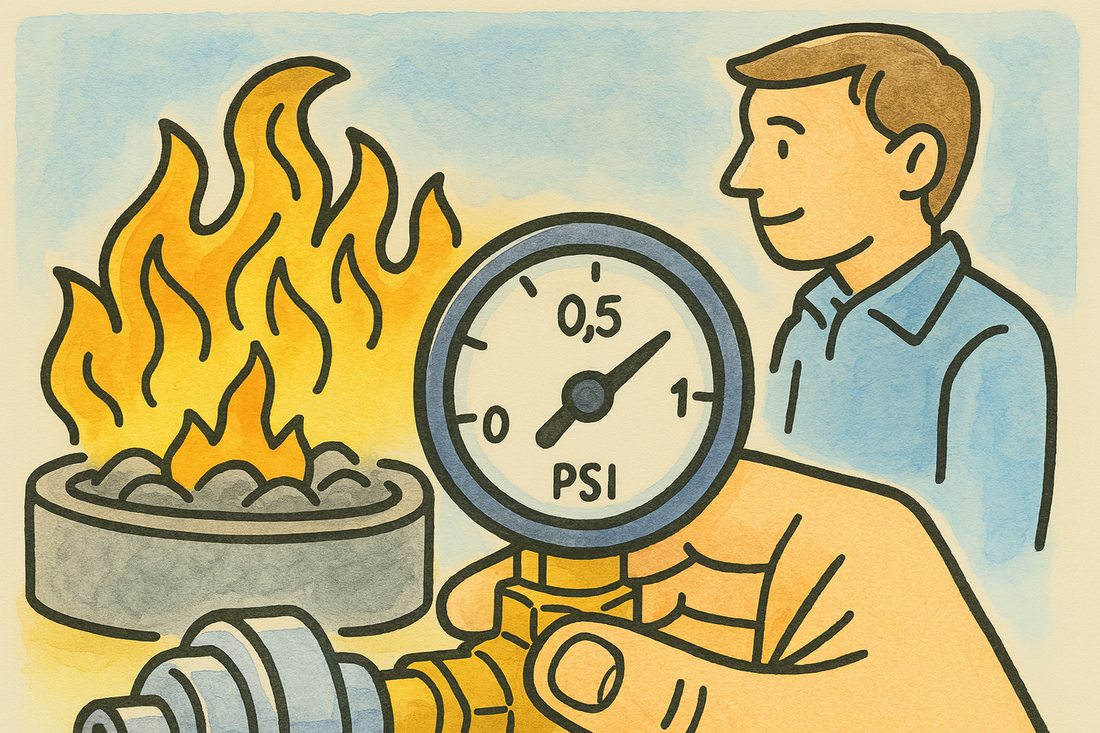
Ensuring Proper Gas Pressure For A Fire Pit 🔥
Share
1️⃣ Evaluate the Gas Line Capacity
Start by inspecting the length and diameter of the gas line feeding your fire pit. Undersized or overly long gas pipes often lead to significant pressure drops. For high-output fire pits, using appropriately sized piping—commonly ½", ¾", or 1" diameter—can make a critical difference. A line that’s too small will restrict gas flow, causing a weak flame no matter how powerful your burner system is.
👉 Tip: Have a professional assess whether your current line size matches the BTU demands of your fire feature.
2️⃣ Verify Supply Pressure at the Fire Pit
To get a clear picture of your gas system’s performance, measure the gas pressure directly at the fire pit using a manometer. For natural gas, a standard supply pressure of 7”–11” WC (Water Column) is generally recommended, though always check your fire pit manufacturer’s specs.
If the pressure is below this range, it may point to supply restrictions upstream—like a clogged line, faulty regulator, or competing appliances drawing gas from the same source.
3️⃣ Install a Dedicated Gas Line (If Possible)
Sharing a gas line with other appliances—such as a pool heater, grill, or home heating system—can cause inconsistent performance due to fluctuating pressure. When possible, install a dedicated gas line specifically for the fire pit.
A direct line ensures the fire pit receives uninterrupted flow and pressure, improving performance and safety. This is especially important for large fire features or those with automatic ignition systems.
4️⃣ Check the Regulator Settings
Your fire pit’s regulator plays a vital role in controlling gas pressure. If it’s incorrectly set or undersized for your burner system’s BTU rating, the flame may struggle to reach its intended height. Make sure the regulator is:
Properly rated for your fire pit’s gas demand
Set correctly to allow enough pressure through (especially for propane systems)
Replacing a low-capacity regulator with a high-capacity one can often resolve poor flame height issues.
🔁 Final Recap: 4 Steps to Better Fire Pit Performance
To ensure your fire pit delivers a beautiful, consistent flame, remember to:
-
Evaluate the gas line size and length for proper capacity.
-
Verify gas pressure at the fire pit using a manometer (target: 7”-11” WC).
-
Install a dedicated line when possible to avoid shared-flow issues.
-
Check the regulator to make sure it’s properly rated and adjusted.
These simple steps can make a world of difference in the performance, safety, and longevity of your fire feature.

